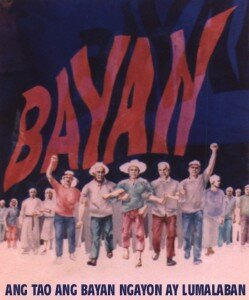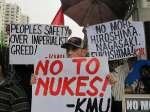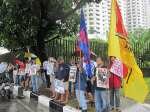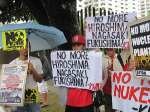June 22, 2012
The rich are getting richer while the poor are increasing in number.
This was the assessment of the umbrella group Bagong Alyansang Makabayan as Forbes released its list of 40 richest Filipinos, topped by mall and real estate tycoon Henry Sy. The 40 richest people in the Philippines saw their wealth grow over $13 billion to $47.4 billion this year,
The Philippines now has 15 certified billionaires according to Forbes, up from 11 last year. Sy leads the pack with $9.1 billion, up by $1.9 billion from last year. The SM group has been criticized recently for its plans to cut or earth-ball trees in Baguio City to pave the way for a parking lot for the mall.
“The net worth of these tycoons appear obscene, happening amid a sea of poverty and hunger in the Philippines. The gap between the rich and poor has grown over the past years. We now have 15 billionaires on one hand and some 11.2 million poor families on the other hand,” said Bayan secretary general Renato M. Reyes, Jr.
“The growing number of billionaires on one hand, and the growing number of poor people on the other hand, belie the Aquino regime’s claims of inclusive growth. And we can assume that whatever economic growth that happened during the first quarter of the year (6.4% GDP) benefited only the mega-rich. These issues will definitely hound the president in his upcoming State of the Nation Address,” Reyes said.
Also included in the top 10 richest Filipinos are Lucio Tan; $4.5 billion, Enrique Razon Jr.; $3.6 billion, John Gokongwei Jr.; $3.2 billion, David Consunji; $2.7 billion, Andrew Tan; $2.3 billion, Jaime Zobel de Ayala; $2.2 billion, George Ty; $1.7 billion, Roberto Ongpin; $1.5 billion, and Eduardo Cojuangco Jr.; $1.4 billion.
“The Aquino government has failed to address the growing gap between rich and poor because it has no real program for land reform and rural poverty, no sustainable program for job-generation, and no plan for industrialization. It views gains in the stock market as a reliable indicator of growth, instead of looking at the actual conditions of the people,” he added.
“While the fortunes of these tycoons are increasing, Aquino has prevented workers from receiving a P125 wage increase,” Reyes said,
Bayan said that the net income of the country’s top 1,000 corporations has grown over the first decade of the millennium. The combined net income of these companies in 2009 (P756B) is more than 600% of their combined net income in 2001 (P116B).
In contrast, the basic pay of wage and salary workers over the same period has hardly risen, starting at P222/day in 2001 and P291/day in 2009.
“Expect these personalities to get richer as government engages in profit-driven private-public partnerships. Meanwhile, the poor are left to fend for themselves and are merely given CCT dole outs and pantawid measures,” Reyes said.
According to data from the National Statistics Office in 2009, the highest income 20% of the population already accounted for over half (51.9%) of total family income leaving the poorest 80% to divide the remaining 48.1% among them.
Citing a study by Ibon Foundation, Bayan asserted that severe inequality in the country can be seen by comparing reports by Forbes Asia on the wealthiest Filipinos with the results of the 2009 Family Income and Expenditure Survey. “In 2009, the net worth of the 25 richest Filipinos of US$21.4 billion is equivalent to the combined annual income of the country’s poorest 11.1 million families.
“The top ten in the latest Forbes list already control almost everything from energy, transportation, real-estate, mining, banking, toll ways and many others. They are part of the powerful 1% of Philippine society,” Reyes said. ###




















